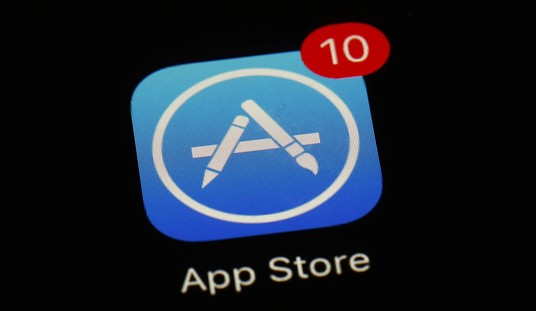“January 1 in Wuhan was March 1 in Seattle” doesn’t mean we’re destined to have 50,000 infections or whatever there, as eventually happened in Wuhan.
But it does mean we could have 50,000 infections there if Washingtonians don’t deal with this aggressively, starting with a massive increase in local testing and people staying away from each other, especially people who are under the weather. The Democratic primary in Washington is six days away. Joe and Bernie had better make damned sure they don’t hold any rallies there.
The scientist in question here, Trevor Bedford, is the same researcher I wrote about a few days ago in this post. He noticed that the strain of COVID-19 in a recent coronavirus patient in Washington was genetically similar to the strain in a patient who was diagnosed back in January. That similarity suggested that the disease had been spreading locally over the past six weeks and is poised to start spreading rapidly throughout the wider community. Time is now of the essence in containing it, says Bedford:
The author of the analysis, a computational biologist named Trevor Bedford, said there are likely already at least 500 to 600 cases of Covid-19 in the greater Seattle area. He urged health authorities and the public to immediately begin adopting non-pharmaceutical interventions — imposing “social distancing” measures, telling the sick to isolate themselves, and limiting attendance at large gatherings.
Three weeks later, on Jan. 21, China imposed the most draconian quarantine measures ever deployed in modern times, both in that city and in others to which the virus had spread but where transmission was only just beginning.
“January 1 in Wuhan was March 1 in Seattle,” Bedford told STAT. “Now would be the time to start these interventions rather than waiting three weeks.”
A widespread outbreak may be unavoidable but “social distancing” and self-isolation will slow the rate of infection, which may make a world of difference in the quality of care a very sick patient receives. A hospital might be able to successfully treat 500 patients in the course of a month; it can’t treat 500 patients if they all show up on the same day. Slowing the spread of the disease is hugely important. Washingtonians, it’s time to start spending more time at home. Lots more.
Bedford published his own analysis of the likely extent of transmission at his website, concluding with a list of mitigating measures that locals should take. His best guess at the number of infected people right now is 570, although it could be as low as 80 — or as high as 1,500 — based on probability analysis. Meanwhile:
I will be traveling to Washington to meet with Governor @JayInslee tomorrow. We are here for every American and will continue to work with state and local leaders as we protect their health and well-being.
— Mike Pence (@Mike_Pence) March 4, 2020
Pence announced last night that the CDC would no longer limit testing to people who meet unrealistically recent criteria, like recent travel to or from China. If coronavirus is spreading here already, as seems all but certain, then obviously it’s idiotic to withhold tests from people who haven’t left the country (or been in direct contact with someone who has). Tests will now be administered whenever a doctor recommends one, which is good. What’s not so good is that the numbers of available tests is still limited thanks to the original CDC screw-up, a mistake that will end up costing God only knows how many lives. The feds claim that 2,500 test kits will ship out around the country by the end of the week; each kit contains 500 tests, which means American labs will have a total capacity of 1.25 million tests soon. Emphasis on “capacity”: Public labs aren’t yet at full throttle, which will limit the number of tests that are actually performed.
The realistic estimate is now likely around 5,000 each day, according to a public health lab industry group…
An FDA spokesperson tells POLITICO that state and local public health labs currently have the capacity to test 15,000 people. New tests CDC is distributing this week will bring that figure up to 75,000 people, FDA said.
Right now 54 public labs are able to conduct testing, each capable of 100 tests or so a day. That’s where the 5,000 figure in the excerpt comes from. Once the remaining public labs come online, that number will bump up to around 10,000, per the Times. Bringing academic labs into the mix will bump it up much further. Private labs joining the effort will bump it up even further. But this will take time, per Politico, and time’s in short supply in Seattle to avert a Wuhan scenario:
Mina estimates that once all public health labs and 200 academic labs that have developed in-house tests are running at capacity, they will be able to process a maximum of 30,000 tests per day. But that assumption “is quite unreasonable at the moment,” he added, noting it will be weeks before most academic labs can begin analyzing patient samples.
Public health labs also need more time to increase their capacity beyond the current 10,000-test target, says Kelly Wroblewski, APHL director of infectious diseases.
So, likely 10,000 per day in the very near term, 30,000 or more per day within weeks. I assume Seattle patients will be given priority, since that’s where the greatest risk of a runaway outbreak appears to be at the moment.
If you want to be angry this afternoon, take five minutes and work through this NYT piece about the CDC’s colossal mistakes in expeditiously rolling out test kits. It’s not just that they messed up their own test and remain unwilling to this day, weeks later, to explain exactly what went wrong. (Although there are clues.) It’s that they refused to scrap their own test and instead circulate the WHO test developed by German scientists that was already in use internationally. “It’s just a very American approach to say, ‘We’re the U.S., the major U.S. public health lab, and we’re going to not follow the leader,’” lamented an epidemiologist at Harvard. Remember that if we end up with a Wuhan nightmare in the northwest.
And then, after you’re good and angry, make yourself feel better by reading this Slate piece about the likelihood that COVID-19 isn’t as lethal as feared. The WHO reported yesterday that the death rate globally thus far for coronavirus is 3.4 percent, much higher than the common flu, but there are many factors that may be inflating that number right now: A sample that’s weighted heavily towards the sickest cases, limited testing that isn’t picking up many of the mildest infections, uneven medical care from country to country, and so on. The Slate piece, written by an ER doctor in Massachusetts, posits that the death rate across the population will be more like the flu, at least in non-elderly patients. Look no further than the Diamond Princess cruise ship, the closest thing we have to a lab experiment on COVID-19’s lethality:
On the Diamond Princess, six deaths have occurred among the passengers, constituting a case fatality rate of 0.85 percent. Unlike the data from China and elsewhere, where sorting out why a patient died is extremely difficult, we can assume that these are excess fatalities—they wouldn’t have occurred but for SARS-CoV-2. The most important insight is that all six fatalities occurred in patients who are more than 70 years old. Not a single Diamond Princess patient under age 70 has died. If the numbers from reports out of China had held, the expected number of deaths in those under 70 should have been around 4.
The data from the Diamond Princess suggest an 8-fold lower mortality amongst patients older than 70 and 3-fold lower mortality in patients over 80 compared to what was reported in China initially. But even those numbers, 1.1 percent and 4.9 percent respectively, are concerning. But there’s another thing that’s worth remembering: These patients were likely exposed repeatedly to concentrated viral loads (which can cause worse illness). Some treatments were delayed. So even the lower CFR found on the Diamond Princess could have been even lower, with proper protocols.
The doctor recommends focusing most of our effort on protecting people 70 and over, for whom the mortality rate is eight percent or greater. I assume they’ll be given priority in testing this week too. Exit question: Is it time for Seattle to close schools for a month? Kids seem to be the safest age cohort from coronavirus but that doesn’t mean they can’t transmit it to each other and then bring it home with them.
Update: The “social distancing” effort begins.
Seattle & King County, with 31 cases & 9 deaths, making new recommendations to people at higher risk for severe #COVID19 https://t.co/S60cdhjipn pic.twitter.com/5CfehxpTp5
— Meg Tirrell (@megtirrell) March 4, 2020






